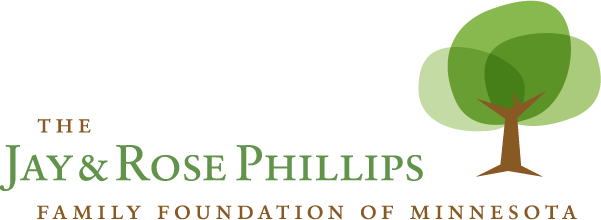WRITTEN BY JOEL LUEDTKE, SENIOR PROGRAM OFFICER
Here’s a timely multiple choice question:
We know a new school year has begun because:
A) Our Facebook News Feeds are filled up with first-day-of-school pictures
B) There are no more wide-ruled notebooks in any store in the metro area
C) Bloggers have returned to the charter vs. district debate
D) All of the above
There isn’t an incorrect answer on this micro-quiz, but item “C” rings especially true here at the Foundation.
Over the years we have supported a long list of efforts to improve the quality of education. Some of these grants supported students at district schools, others benefitted students at public charter schools, and occasionally we were able to fund work that aided students regardless of the type of school they attend. Throughout most of this time we remained largely agnostic on the district vs. charter debate, choosing instead to evaluate each education funding opportunity on its merits.
No longer. We recently adopted a stronger overarching strategy to guide our education grantmaking. Going forward we will:
- prioritize the growth of high quality schools that serve low income kids;
- address the full array of challenges that must be overcome for such schools to proliferate;
- and, set aggressive pace to expand these learning opportunities.
With this strategy in mind, we anticipate that the Foundation’s future investments in K-12 education will be targeted towards high-performing public charter schools and the institutions that support them.
Here’s why.
Turning the Exception into the Rule
The Achievement Gap. The Belief Gap. Disparities. However you frame the challenge, the conversation about public education in the Twin Cities centers on the stubbornly poor outcomes of students of color at most public schools, both district and charter. Third grade reading scores paint this picture quite clearly:
(2014 Minnesota Comprehensive Assessments as reported by Generation Next)
Yet hidden within these poor general results are exceptional schools that help a high percentage of their low income students of color thrive. These “Beat the Odds” schools show us that the correlation between race, poverty and poor academic success can be disrupted. Recently-released results from the 2013 Minnesota Comprehensive Assessment tests showed students at these schools achieving reading proficiency rates of 42-66% and math proficiency rates of 59-80%. They also show that most of these “Beat the Odds” schools are public charters.
Three Foundation grantees are among these positive deviants: Hiawatha Leadership Academy, Harvest Preparatory, and Minneapolis College Preparatory. Some of the exceptional schools that the Foundation does not currently fund include Friendship Fine Arts, Valley View Elementary, and Global Academy.
Unfortunately, very few low income kids have a chance to learn at one of these high-impact schools. One analysis calculated that only 15% of the low income students in Minneapolis are currently being educated in such settings.
We want to change this number. Thankfully, some of the most experienced “beat the odds” schools are expanding. Hiawatha Leadership Academies plans to grow into a network of five schools serving 2,000 students by 2020. The Harvest Network of Schools, currently comprised of Harvest Preparatory School, Best Academy and the Mastery School, plans to grow from its present enrollment of 1300 students in grades K-8 to serve an additional 2500 students by 2022. This expansion will focus on North Minneapolis.
We stand ready to support this growth, holding firm to the belief that this is the fastest way to put more low income kids of color on a path to post-secondary success, a good career and full participation in our community.
Facing the Enormity of the Challenge
But we also acknowledge the enormous, multifaceted challenges that confront trailblazing educators and schools. Finding facilities is increasingly difficult for new or expanding schools. Finding talented, passionate teachers and school leaders is not easy. Despite their strong results, these schools sometimes also struggle to recruit enough students. And, contributed resources may be needed for several years while schools grow their enrollment enough to sustain expanded management and building-related costs.
This Foundation doesn’t have the resources to help even one school overcome all of these challenges. That’s why we are heartened to see a growing community of like-minded funders coming together with education leaders to build and support a plan for dramatically expanding access to high quality education for low income children. We will share more details on this collaborative and plan in coming months.
We Can’t Wait
Another collaboration of funders recently announced its strategies for improving K-12 education in Minneapolis and St. Paul. The ideas put forth – expanding developmental screening for 3-year-olds, improving reading tutoring for K-3 students, and training volunteers to help high schoolers develop solid career plans – are all needed and important improvements to our K-12 system. However, they don’t directly address the reality that most low income kids of color fail to thrive in most schools. And that fundamental problem doesn’t appear to be changing. The recent MCA results showed essentially no change in the average academic proficiency rates of students at district schools in Minneapolis and St. Paul.
We know that educational leaders at districts and schools across the region are employing a panoply of tactics to lift the educational outcomes of low income students of color. However It is unclear to us when, or if, incremental changes to underperforming district and charter schools will lead to better results. Rather than wait on this uncertain prospect, we have chosen to partner with educators who are already helping kids thrive so that they can sustain and grow their efforts. If interventions like those listed above help underperforming schools become more successful, we will be happy to consider supporting them as well.
In the meantime, we will join with like-minded peers to amplify the efforts of currently-successful schools.

